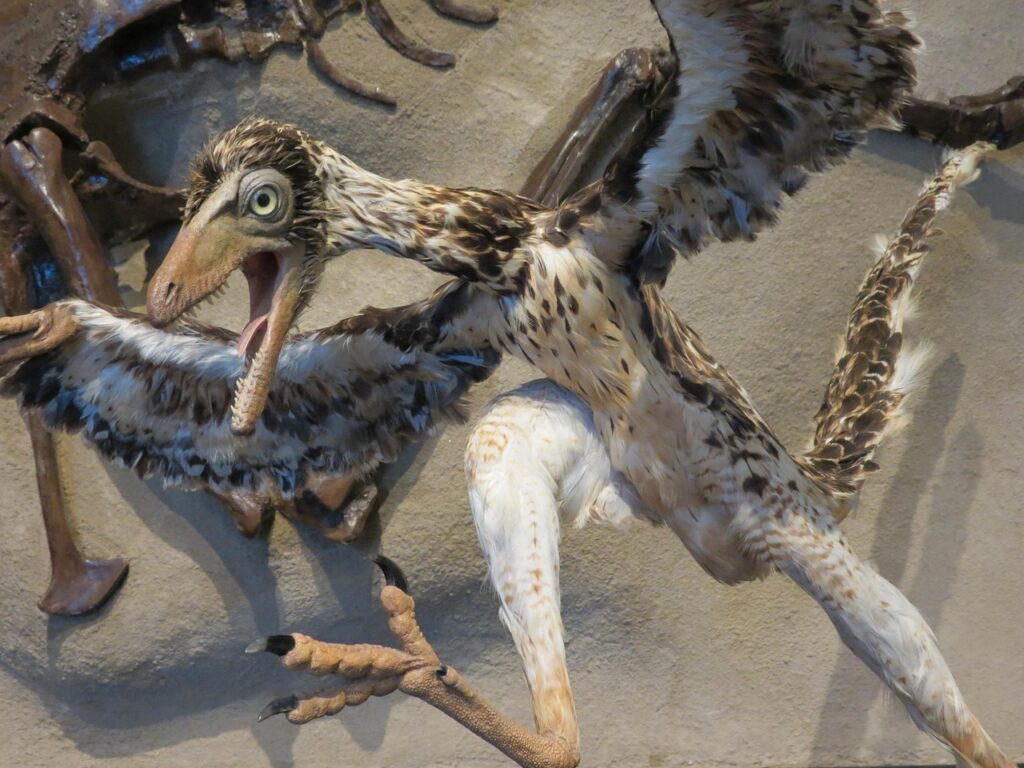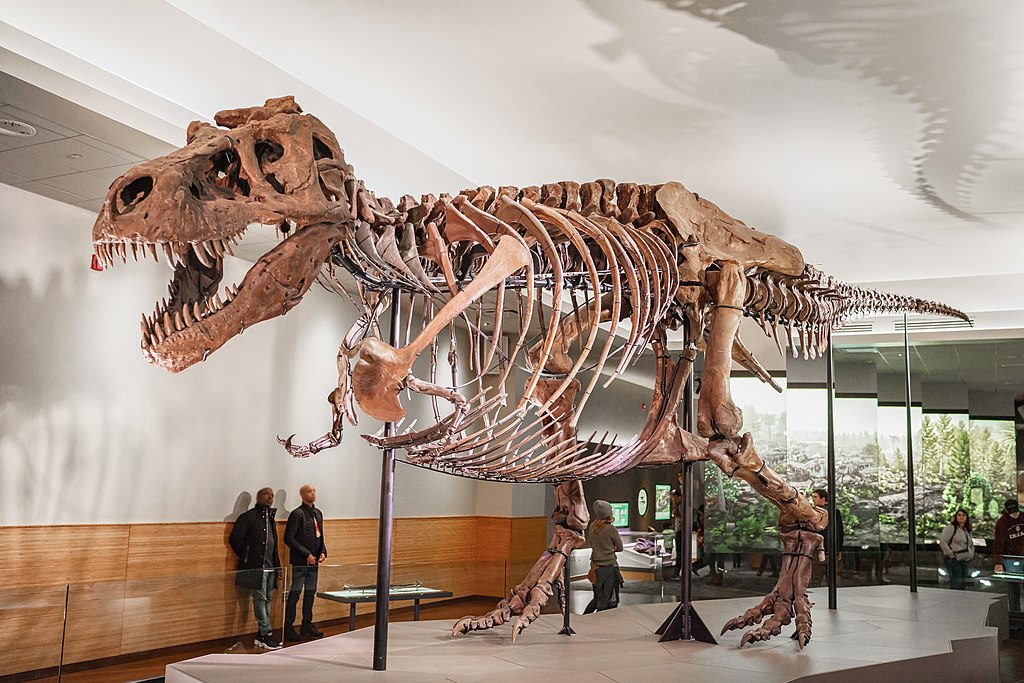The journey from dinosaurs to birds represents one of the most fascinating evolutionary transitions in the history of life on Earth. While many people picture dinosaurs as massive creatures that dominated prehistoric landscapes, it was some of the smallest dinosaur species that provided the critical evidence linking these ancient reptiles to modern birds. These diminutive dinosaurs, some no larger than chickens or even hummingbirds, preserved crucial anatomical features that have allowed paleontologists to trace the gradual transformation from terrestrial dinosaurs to the feathered flyers we see today. Their fossilized remains, often exquisitely preserved, have revolutionized our understanding of avian origins and continue to reshape scientific and popular conceptions of what dinosaurs were.
The Theropod Connection: Small Predators with Bird-like Features

The evolutionary relationship between birds and dinosaurs begins with theropods, a diverse group of predominantly carnivorous dinosaurs that included famous giants like Tyrannosaurus rex. However, it was the smaller members of this group that displayed the most bird-like characteristics. Species like Compsognathus, roughly the size of a turkey, exhibited features that hinted at their evolutionary trajectory toward birds. These smaller theropods possessed hollow bones, three-toed feet with a similar arrangement to birds, and evidence suggests some had primitive feather-like structures. Their reduced size represented an important evolutionary trajectory, as decreased body mass is often a prerequisite for the evolution of flight. The small theropods demonstrated that the line between dinosaur and bird was far blurrier than scientists had previously believed, setting the stage for further discoveries that would complete the evolutionary picture.
Microraptor: The Four-Winged Wonder

Perhaps no small dinosaur has contributed more to our understanding of bird evolution than Microraptor, a crow-sized dromaeosaurid discovered in China’s Liaoning Province. Dating back approximately 120 million years, Microraptor made headlines as the first known dinosaur with four wings, possessing long flight feathers on both its arms and legs. These feathers were asymmetrical – a key characteristic of modern flight feathers in birds. Standing just 77 centimeters long and weighing less than a kilogram, Microraptor preserved evidence that some dinosaurs were not just feathered but capable of some form of aerial locomotion. Scientists believe Microraptor may have glided from tree to tree, representing a possible intermediate stage in the evolution of powered flight. Its small size allowed for the preservation of soft tissues and feather impressions that would have been lost in larger specimens, providing a crucial window into this evolutionary transition.
Archaeopteryx: The Iconic Missing Link
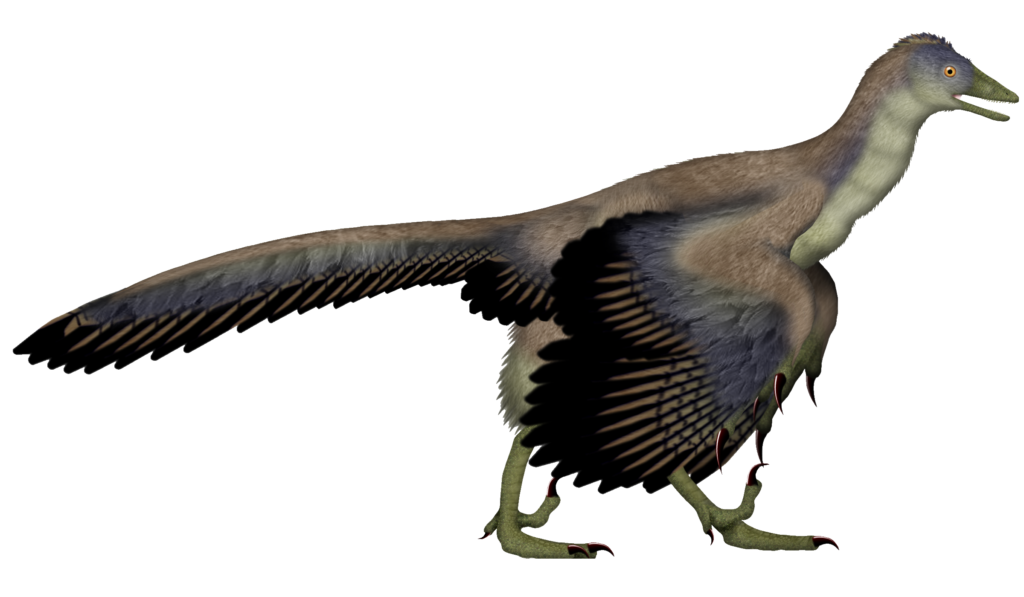
No discussion of bird evolution would be complete without mentioning Archaeopteryx, perhaps the most famous transitional fossil ever discovered. About the size of a modern crow, this Late Jurassic dinosaur (approximately 150 million years old) combined reptilian features like teeth, a long bony tail, and three-clawed fingers with distinctly avian characteristics, including feathered wings and a wishbone. First discovered in 1861, just two years after Darwin published “On the Origin of Species,” Archaeopteryx arrived at the perfect moment to provide compelling evidence for evolutionary theory. Its small size was crucial to preserving the delicate feather impressions in the fine-grained limestone of what is now Germany. Without these pristinely preserved specimens, the connection between dinosaurs and birds might have remained theoretical rather than supported by fossil evidence. Archaeopteryx demonstrates the importance of small size in preserving the subtle anatomical details necessary for understanding evolutionary transitions.
Feathered Fossils of Liaoning: A Paleontological Treasure Trove
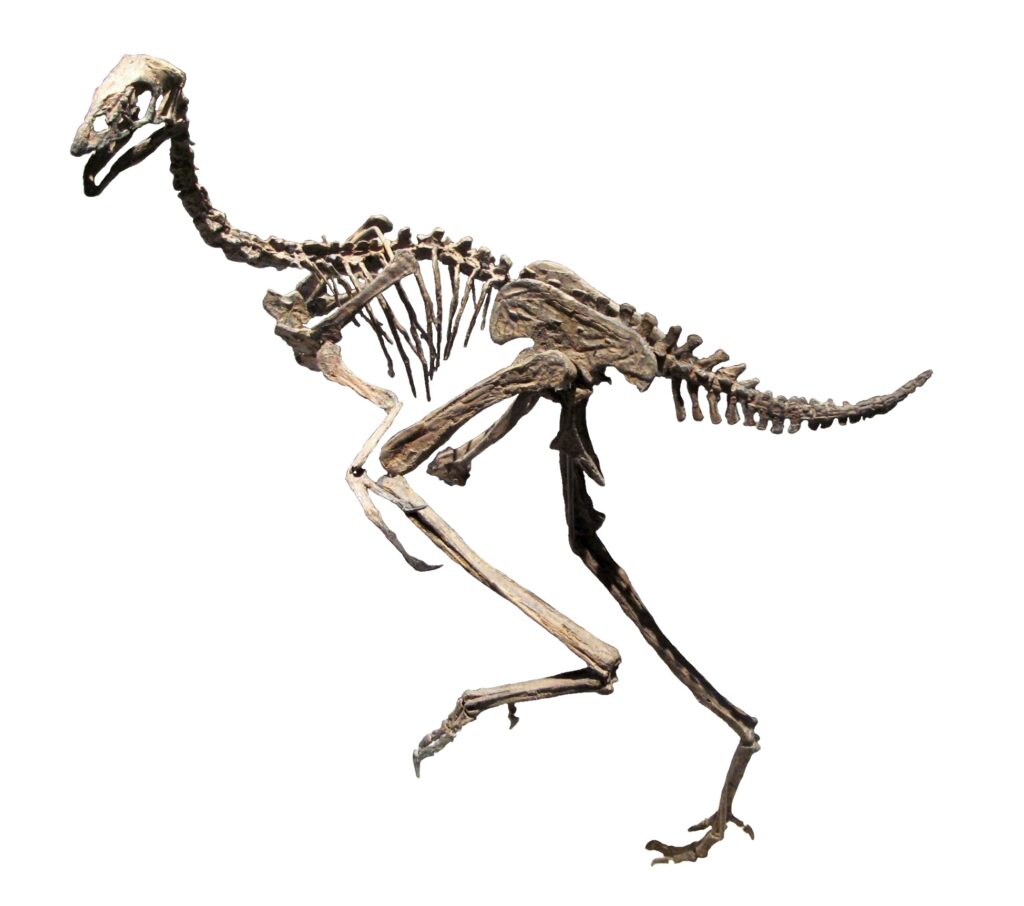
The northeastern Chinese province of Liaoning has yielded an unprecedented collection of small, feathered dinosaur fossils that has transformed our understanding of bird evolution. Beginning in the 1990s, this region’s finely layered sedimentary rocks have preserved thousands of specimens with remarkable detail, including soft tissues, internal organs, and feathers. The conditions that created these exceptional fossils – rapid burial in fine volcanic ash around ancient lakes – preferentially preserved smaller animals. Dinosaurs like the chicken-sized Sinosauropteryx (the first non-avian dinosaur confirmed to have feathers) and the pigeon-sized Caudipteryx showcased diverse feather types, demonstrating that feathers evolved for purposes other than flight, such as insulation and display. The small size of these dinosaurs meant they could be buried quickly and completely, creating the oxygen-free environment necessary for exceptional preservation. Without these diminutive dinosaurs, we might never have discovered that feathers were widespread among theropods long before the evolution of birds.
Yi qi and Ambopteryx: Bizarre Experiments in Gliding
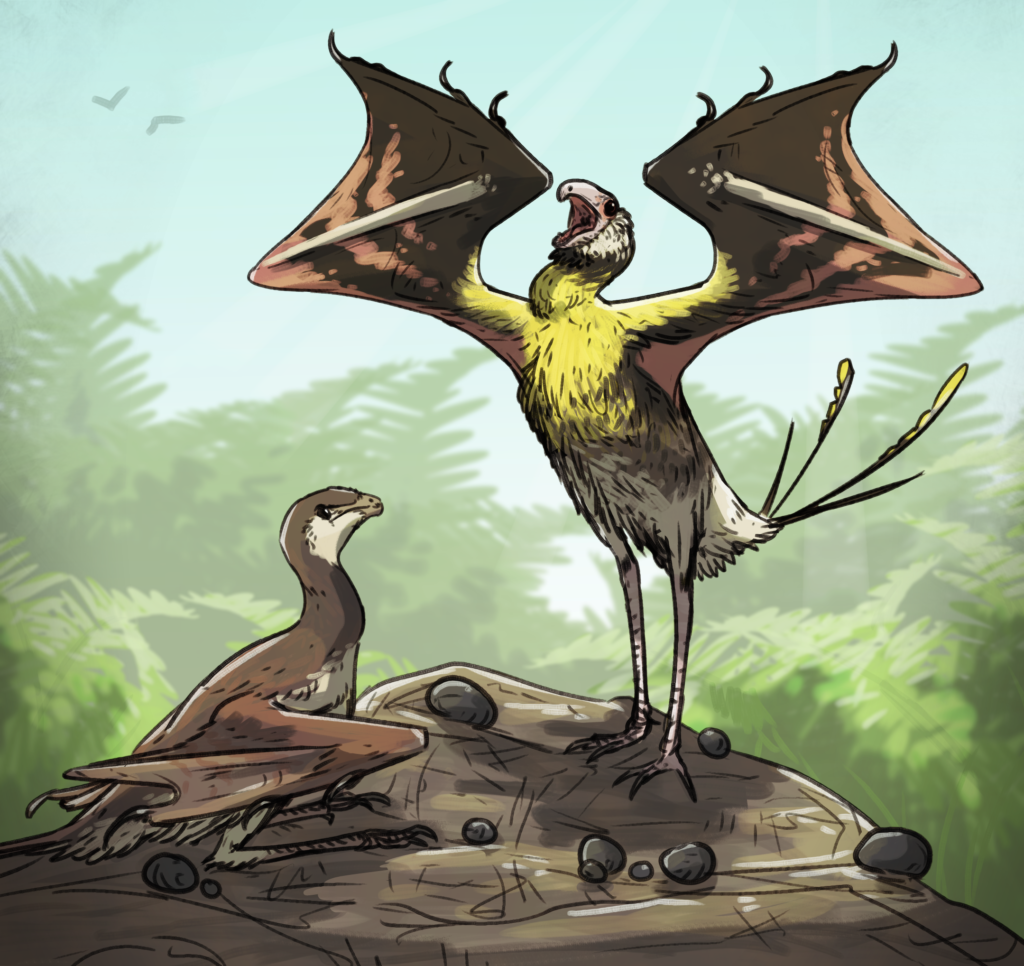
The discovery of Yi qi in 2015, followed by its close relative Ambopteryx in 2019, revealed one of the strangest chapters in the dinosaur-to-bird transition. These pigeon-sized dinosaurs, belonging to the scansoriopterygid family, evolved a completely different approach to aerial locomotion than the lineage that led to modern birds. Instead of relying solely on feathers, they developed bat-like membranes supported by an elongated wrist bone called the styliform element – a structure without parallel in any other known dinosaur or bird. Weighing perhaps 380 grams, Yi qi represents one of the smallest known dinosaurs outside the bird lineage. The preservation of their delicate wing membranes was only possible because of their diminutive size, as larger animals rarely preserve such soft tissue structures. These tiny gliders reveal that dinosaurs experimented with multiple forms of aerial locomotion, with only the feathered wing configuration ultimately surviving to the present day in modern birds.
Miniaturization as an Evolutionary Pathway
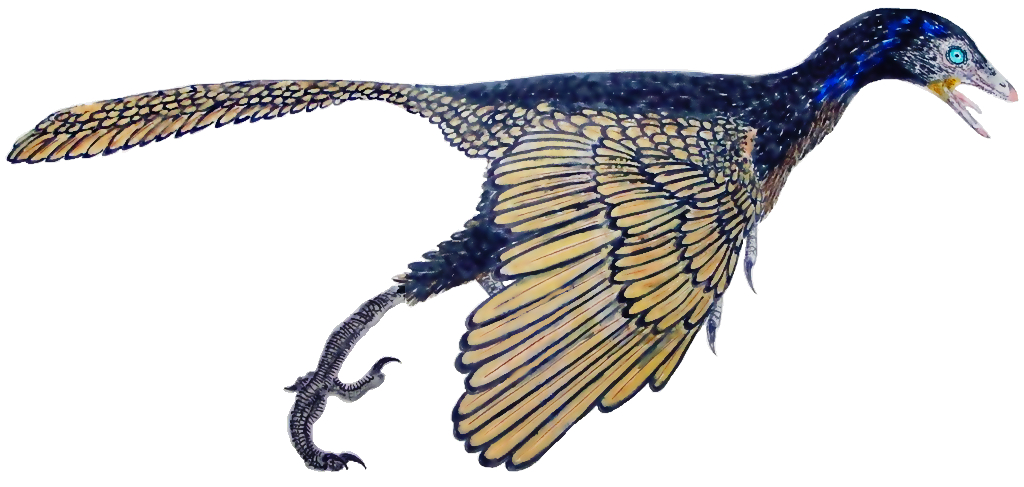
The dramatic size reduction in the dinosaur lineage leading to birds represents a crucial evolutionary pattern called miniaturization. This process, wherein animals evolve significantly smaller body sizes over time, often accompanies major evolutionary transitions. Research published in Science in 2014 demonstrated that theropod dinosaurs underwent sustained miniaturization for over 50 million years before Archaeopteryx appeared. These dinosaurs shrank from an average weight of 163 kg to just 0.8 kg – a 200-fold reduction. This miniaturization brought about numerous physiological and anatomical changes that would prove advantageous for flight, including higher metabolic rates, improved agility, and the retention of juvenile characteristics like proportionally larger brains. The discovery of ever-smaller dinosaur species has allowed scientists to track this miniaturization process in remarkable detail, highlighting how reduced body size created the conditions necessary for the evolution of powered flight.
Skull Evolution and Brain Development

The evolution of bird-like characteristics in small dinosaurs extended beyond external features to dramatic changes in skull structure and brain development. CT scanning of small dinosaur skulls has revealed that the brain and sensory organs underwent significant reorganization along the evolutionary path to birds. Species like the meter-long Bambiraptor exhibited enlarged brain regions associated with coordination and visual processing – adaptations crucial for aerial locomotion. The relatively large brain size of these small dinosaurs compared to their body mass resembles the pattern seen in modern birds rather than reptiles. Paleontologists have noted that small theropods show a progressive shift toward more forward-facing eyes, providing the improved depth perception necessary for catching prey and navigating in three dimensions. These neurological changes occurred alongside the physical transitions in the skeleton, demonstrating that the evolution of flight required cognitive adaptations as well as anatomical ones.
The Importance of Anatomical Proportions
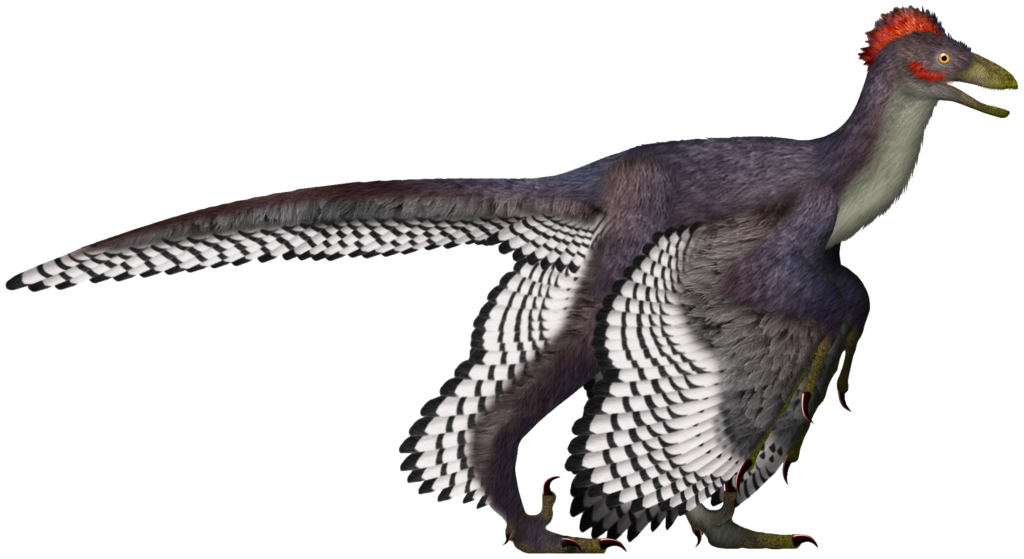
Small dinosaurs reveal that the evolution of birds involved not just the development of new features like feathers, but also significant changes in body proportions. Compared to their larger theropod relatives, many small dinosaurs close to the bird lineage exhibited longer arms relative to their legs – a critical prerequisite for flight. Species like Microraptor and Anchiornis possessed arm lengths approaching 80% of their leg length, much closer to the proportions seen in early birds than in typical theropods. These altered proportions emerged gradually in progressively smaller dinosaur species, suggesting that reduced body size enabled these evolutionary experiments in anatomy. The small stature of these transitional species allowed for lighter skeletons with longer forelimbs that could eventually support wing loading for gliding and flight. Without these small-bodied intermediates, the dramatic shift in proportions between typical theropod dinosaurs and birds would appear as an unbridgeable evolutionary gap rather than a gradual transition.
Convergent Evolution: When Small Size Leads to Bird-like Features
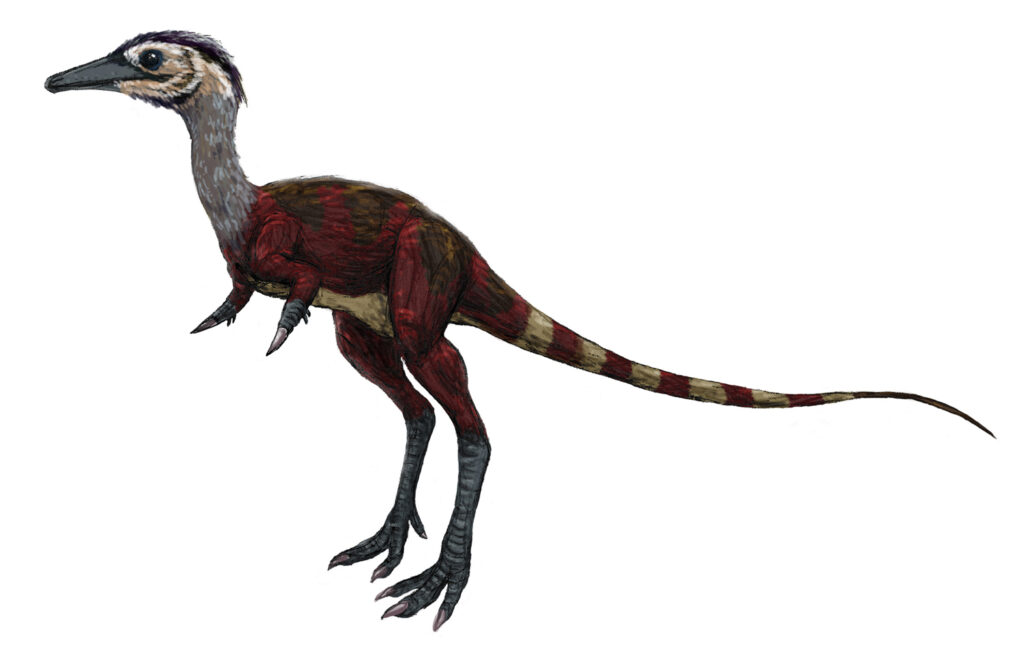
The fossil record of small dinosaurs has revealed multiple instances of convergent evolution, where unrelated lineages independently evolved similar traits due to comparable selective pressures. The Alvarezsaurids, a group of small theropods including the 70 cm-long Shuvuuia, evolved highly specialized forelimbs with a single functional digit, superficially resembling bird wings despite having no direct connection to avian evolution. Similarly, the troodontids developed large brains, stereoscopic vision, and other bird-like features despite not being direct ancestors of birds. These examples of convergence underscore how reduced body size can drive the evolution of bird-like characteristics even in lineages not directly ancestral to modern birds. The small stature of these dinosaurs created evolutionary opportunities that channeled development in bird-like directions, illuminating the physical constraints and possibilities that shaped avian evolution. By studying these instances of convergence in small dinosaurs, scientists can better understand which avian features were inevitable consequences of size reduction versus unique innovations of the bird lineage.
Amber Preservation: Capturing the Smallest Details
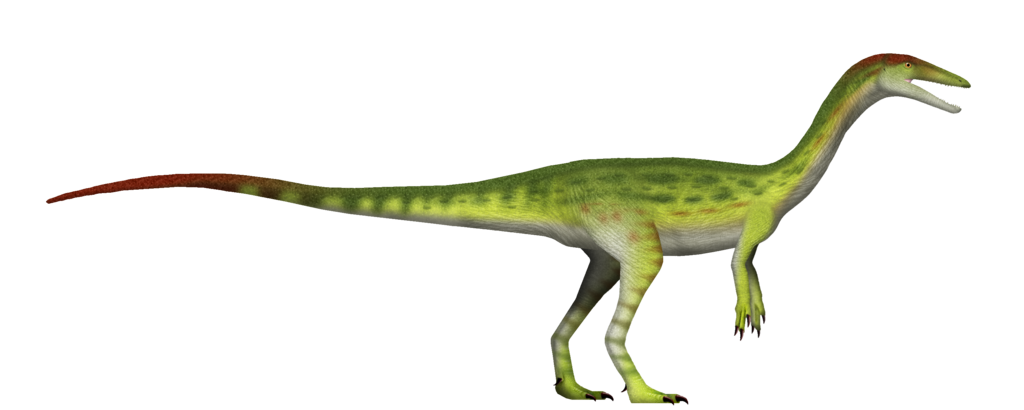
Perhaps the most remarkable small dinosaur discoveries have come from amber, fossilized tree resin that can capture organisms with microscopic detail. In 2016, researchers described a 99-million-year-old amber specimen from Myanmar containing the partial tail of a juvenile coelurosaur (a group of theropod dinosaurs that includes modern birds) smaller than a sparrow. This specimen preserved not just the skeletal elements but also the three-dimensional structure of the feathers, showing a primitive arrangement different from modern birds. In 2020, another amber specimen revealed Oculudentavis khaungraae, initially described as possibly the smallest dinosaur ever discovered at just 2 grams, though subsequent research suggested it may be a lizard instead. Regardless of its ultimate classification, such diminutive specimens demonstrate how amber preservation allows scientists to study anatomical details at scales impossible with traditional fossils. Only the smallest dinosaurs could be preserved in amber, providing unique insights into microanatomy that complement the information available from larger specimens.
The Evolutionary Innovation of Egg-Laying

Small dinosaurs have provided crucial insights into the evolution of reproduction, a fundamental aspect of the dinosaur-bird transition. Discoveries of nesting sites for small dinosaurs like Oviraptor and Citipati revealed that these species brooded their eggs in a bird-like fashion, sitting atop nests with their limbs spread over the clutch. The relatively small size of these dinosaurs allowed for the preservation of complete nesting scenes, showing behavioral patterns strikingly similar to modern birds. Furthermore, research on egg microstructure and composition has shown that small maniraptoran dinosaurs already possessed many of the specialized egg characteristics seen in modern birds. The progressive reduction in egg size relative to adult body size tracked the miniaturization of the dinosaurs themselves, eventually reaching the proportionally large eggs characteristic of birds. These reproductive adaptations, preserved primarily in smaller species, demonstrate that many supposedly “avian” breeding strategies evolved in non-flying dinosaurs millions of years before the first birds took to the air.
Modern Research Techniques: Extracting New Information
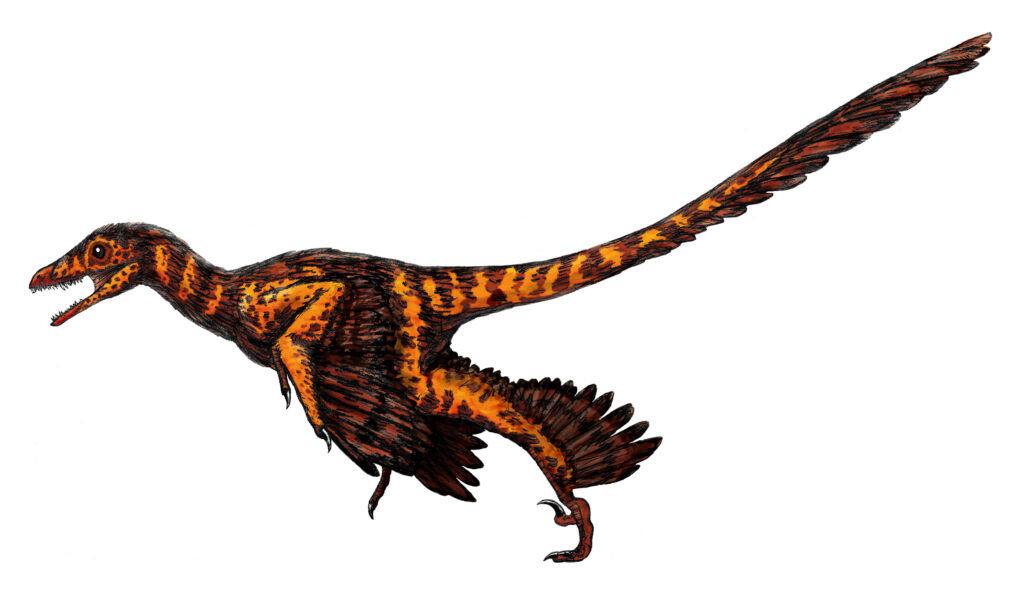
The study of small dinosaurs has benefited tremendously from technological advances that allow scientists to extract previously unobtainable information from fossil specimens. Techniques like scanning electron microscopy have revealed the microstructure of feathers in specimens like the chicken-sized Sinornithosaurus, showing the presence of melanosomes – cellular structures containing pigment that indicate these dinosaurs had colored feathers. Laser-stimulated fluorescence imaging has highlighted soft tissue details in small specimens that remain invisible under normal light. Synchrotron radiation has allowed scientists to peer inside fossils without damaging them, revealing internal anatomical features of small dinosaurs like Anchiornis. These high-resolution techniques are particularly effective with smaller specimens, where the entire animal can be analyzed at once at the highest magnifications. The compact size of these dinosaurs makes them ideal subjects for cutting-edge analytical methods, continuing to yield new insights decades after their initial discovery.
The Ongoing Search for the World’s Smallest Dinosaurs
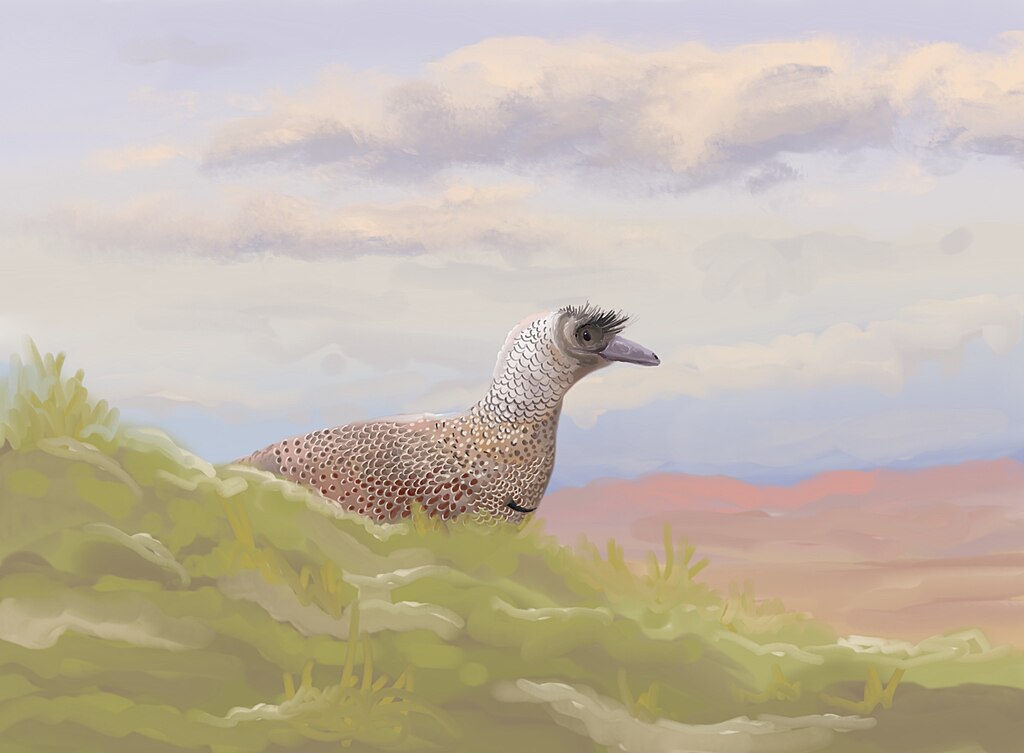
The quest to identify the absolute smallest dinosaurs continues to drive paleontological exploration worldwide. Currently, several contenders vie for the title depending on how measurements are calculated. The hummingbird-sized Microraptor zhaoianus, the bee hummingbird-sized Parvicursor remotus, and the sparrow-sized Epidexipteryx all represent extreme miniaturization in non-avian dinosaurs. If including avialans (the group containing birds and their closest relatives), then the recently discovered Ambopteryx longibrachium, weighing just 306 grams, might claim the title. When considering modern birds as living dinosaurs, the record goes to the bee hummingbird (Mellisuga helenae) at just 2 grams. Each discovery of extraordinarily small dinosaurs helps refine our understanding of the lower size limits that constrained dinosaur evolution. These tiniest dinosaurs demonstrate how extreme the process of miniaturization became in certain lineages, pushing the boundaries of what we typically consider “dinosaurian” and blurring the line between dinosaurs and birds even further.
How Small Dinosaurs Bridged the Gap to Birds

The world’s smallest dinosaurs have contributed disproportionately to our understanding of avian evolution, preserving crucial transitional features that would have been lost in larger specimens. From Microraptor’s four wings to Archaeopteryx’s feathered imprints, these diminutive species captured the subtle anatomical shifts that marked the dinosaur-to-bird transition. Their reduced size enabled the preservation of delicate structures like feathers, wing membranes, and even color-producing cells that rarely survive in larger fossils. As research techniques continue to advance, these small dinosaurs will undoubtedly yield even more insights into one of evolution’s most remarkable transformations. Far from being insignificant due to their size, these miniature dinosaurs have proven essential to solving one of paleontology’s greatest puzzles – how the mighty dinosaurs gave rise to the diverse birds that fill our skies today.


